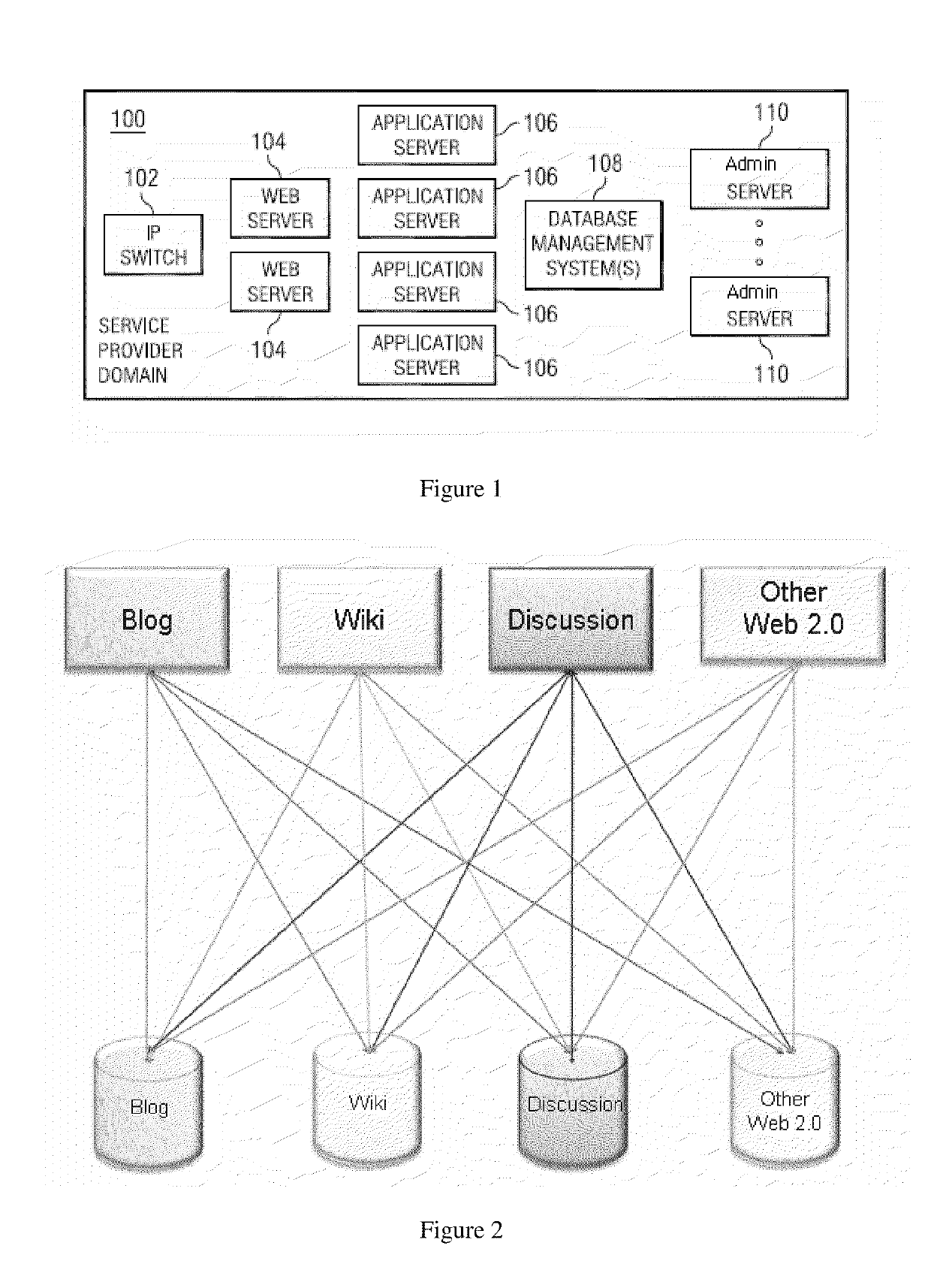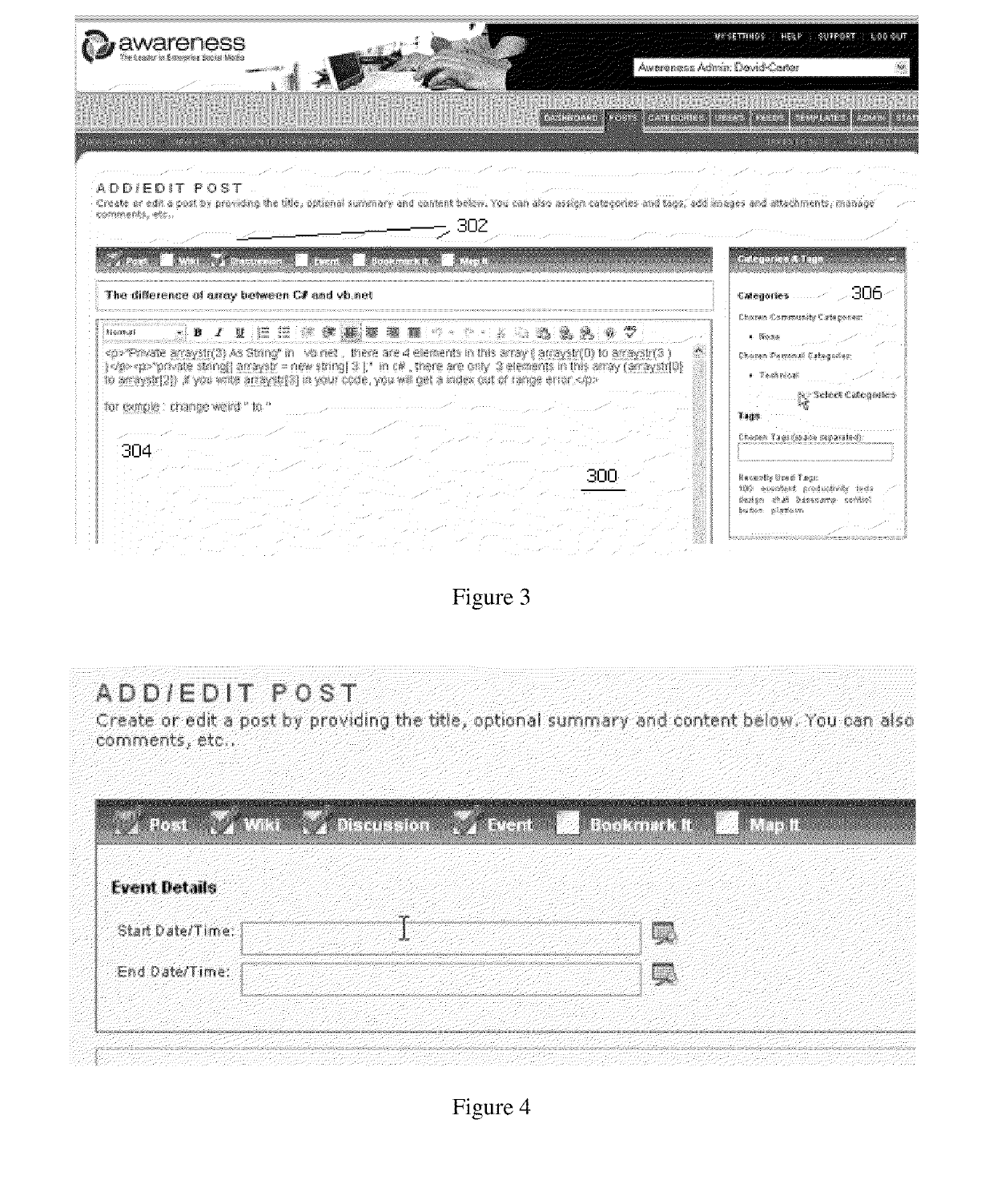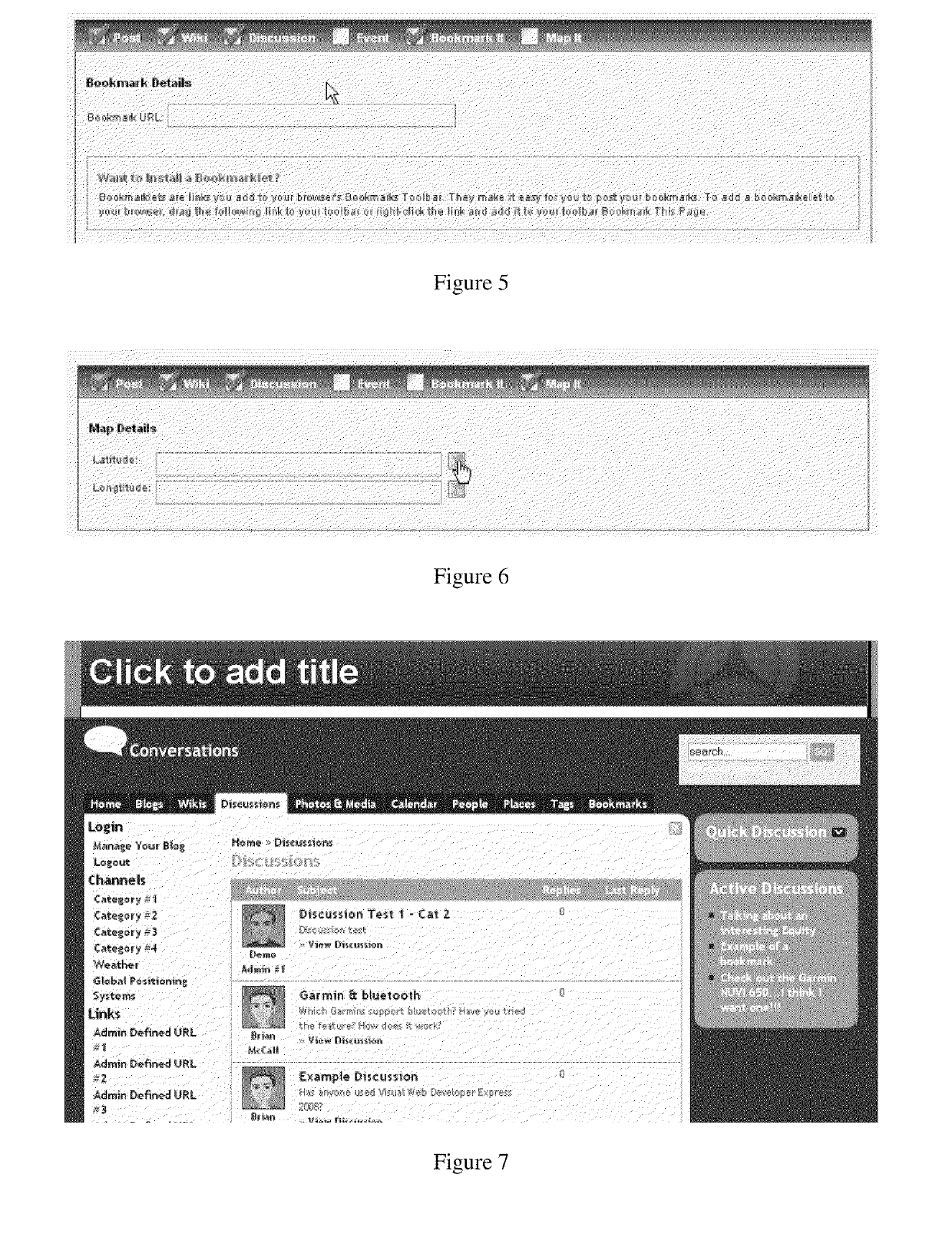Hosted system for enabling enterprises to build and operate online communities
- Summary
- Abstract
- Description
- Claims
- Application Information
AI Technical Summary
Benefits of technology
Problems solved by technology
Method used
Image
Examples
Embodiment Construction
[0028]FIG. 1 illustrates a representative service provider or system architecture, which in the preferred embodiment is implemented in or across one or more data centers. A data center typically has connectivity to the Internet. In one embodiment, the system provides a web-based hosted solution through which enterprises build and operate online “communities.” An “enterprise” typically is a business organization (such as a corporation or an operating division thereof) that leases or otherwise obtains access to the system, typically on a subscription basis. Thus, in a representative embodiment, an enterprise enters into a service agreement with the service provider to obtain access to one or more functionalities exposed by the system. The system operator (the service provider) makes the hosted platform available to one or more enterprise customers, who use the platform to build and manage online communities by which enable enterprise customers, prospects, employees, or partners connec...
PUM
 Login to View More
Login to View More Abstract
Description
Claims
Application Information
 Login to View More
Login to View More - R&D
- Intellectual Property
- Life Sciences
- Materials
- Tech Scout
- Unparalleled Data Quality
- Higher Quality Content
- 60% Fewer Hallucinations
Browse by: Latest US Patents, China's latest patents, Technical Efficacy Thesaurus, Application Domain, Technology Topic, Popular Technical Reports.
© 2025 PatSnap. All rights reserved.Legal|Privacy policy|Modern Slavery Act Transparency Statement|Sitemap|About US| Contact US: help@patsnap.com



